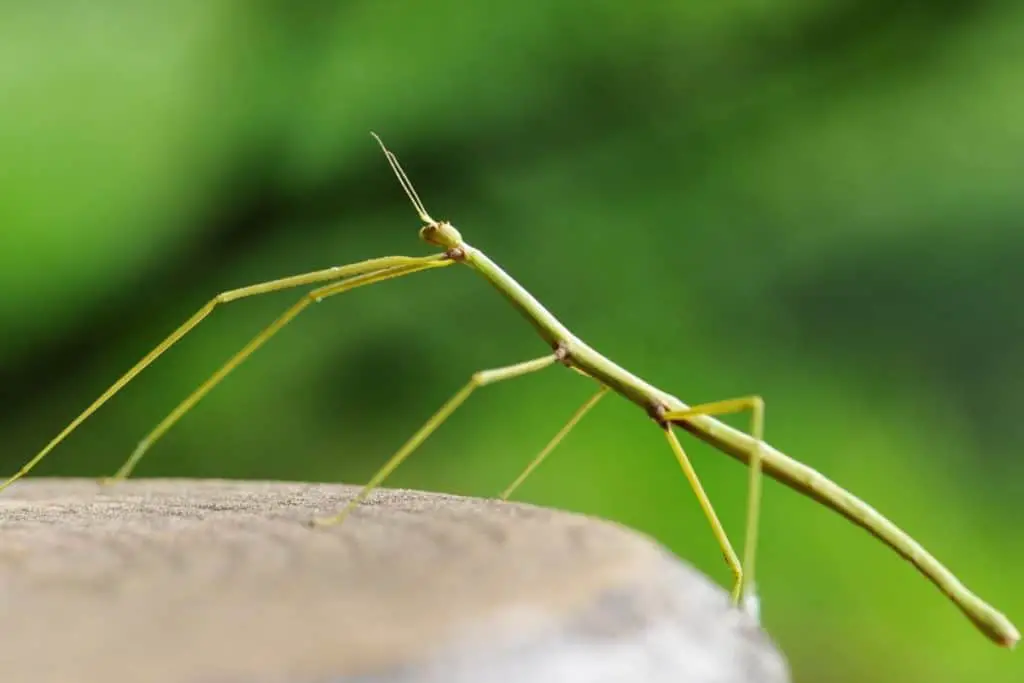Why Do Stick Insects Dance? Stick insects “Phasmatodea” are fascinating creatures and one of the most interesting behaviors they exhibit is their strange dance-like movements.
Some of their dances or sways “as some like to call it” appear quite elaborate and can involve things like, wing-flicking, leg-waving, and antennae shaking.
But, why do stick insects dance? Is there a reason behind this strange behaviour?
Well in this article we’ll explore the different potential explanations for why stick insects dance or sway. So, let’s get to it.
Stick Insects Dance (Sway) Meaning
It is said that the stick insect’s dance movements have their own meaning depending on the situation, with some actions used as alarm or courtship signals.
This behavior has been closely documented in its complexity and even interpreted subtle nuances in their motions to understand why they make them.
What makes it even more remarkable is that these moves often seem well-choreographed and synchronized, suggesting a form of communication that allows individual stick insects to coordinate with each other.
It’s believed that these dance movements serve several different purposes, such as:
- Attracting Mates
- Deterring Predators
- Communicating With Other Insects
Attracting A Mate
One of the main potential purposes of stick insects dancing is to attract a mate! Female stick insects use these dances to signal to males that they are ready to mate.
This is especially prevalent in species where the female’s appearance is less obvious than the male, as she must make a greater effort to attract a potential partner.
For example, some species have evolved large showy antennae and wing patterns that can be used for visual cues during courtship displays.
These dances may also help the female stick insect pick out healthier or more genetically fit mates by assessing their movements and responses.
Deterring Predators
In addition to mating rituals, the dancing behavior of stick insects may also be used for defense purposes.
They can use their movements to startle predators or even give off chemical signals which alert other individuals in the area of danger.
By flicking their wings rapidly or shaking their antennae, they are able to create a distraction that can give them enough time to escape.
In some cases, the vibrations from their legs may act as a warning signal to other stick insects of potential danger in the area.
Communication With Other Insects
Finally, the dancing behavior of stick insects may also be used as a form of communication between individuals in a group.
This could involve establishing group boundaries and marking areas of interest or danger.
It’s thought that the movements act like some sort of ‘language’ which allows them to inform each other about their environment and coordinate activities.
Related Article:

Do Stick Insects Use Swaying As A Camouflage Strategy?
Stick insects have fascinating behaviors, especially when it comes to camouflage and blending in with the environment.
One such behavior is swaying, where certain species of stick insects are seen to sway back and forth when presented with windy conditions.
To assess the degree of the conspicuousness of stick insects while they sway, researchers recently studied the responses of a species known as Macleay’s Spectre (Extatosoma Tiaratum) to various wind conditions.
The results showed that wind alone was enough to initiate swaying, however, they did not maintain it over time.
Furthermore, variable winds produced significantly more sways than constant ones, verifying the potential effectiveness of this form of camouflage.
Do Stick Insects Dance Or Sway To Music?
Although it has been suggested that some stick insects may be able to sway, or even dance, to music, scientists believe that this could not be possible due to their poor hearing ability.
Unlike humans and other vertebrates, very few insect species communicate through sound.
Therefore, the distinction between rhythm in music and other noises is difficult for them to detect.
Take Note: While there are claims that some stick insect species may be able to dance to music this is largely attributed to their sensory organs.
Stick insects use their sense of touch and vibration more than sound, as a result, they can pick up on vibrations which could explain why they seem to dance or sway in tune with certain musical pieces.
What Does Stick Insects Dance Or Sway Look Like?
The dancing and swaying behavior of stick insects is quite fascinating to watch. In some cases, it looks like they’re doing a classic dance step, often accompanied by intricate leg work.
In other cases, the movements are much more subtle, with only slight changes in body position or antennae movement being detectable to the human eye.
During their dances, stick insects may display the following:
- Flick Their Wings Rapidly
- Shake Their Antennae
- Bend Their Legs
- Move Their Abdomen
- Sway From Side To Side
It’s amazing to think that such small insects have dances with meaning and purpose. Even if we can’t always understand what they are doing, it’s still fascinating to watch.
Conclusion
So, why do stick insects dance? As we’ve seen there are a variety of potential explanations.
It could be used for mating purposes, defense against predators, or even communication with other insects in the area.
Whatever the reason, it is amazing to watch these creatures move!
